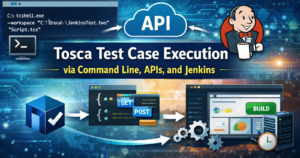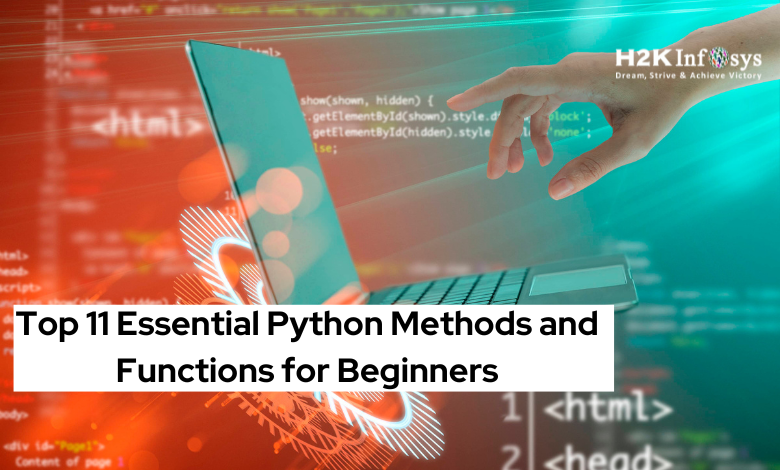SQL (Structured Query Language) joins are one of the most fundamental concepts when working with relational databases, as they allow you to combine data from multiple tables based on a related column. In real world database scenarios, data is often distributed across several tables, and joins enable you to link this data together to retrieve meaningful insights. Whether you’re performing data analysis, generating reports, or managing databases, understanding SQL joins is essential to efficiently query and manipulate data.
This knowledge becomes particularly important during interviews, where SQL joins are a frequent topic. Employers seek candidates who can demonstrate their ability to manage and analyze data using various types of joins, such as INNER JOIN, LEFT JOIN, RIGHT JOIN, and FULL JOIN. Mastering joins will not only make you a more proficient SQL user but also give you the confidence to tackle more complex queries involving multiple tables and relationships between them.
Below, you’ll find a comprehensive list of common SQL join interview questions and answers, complete with explanations and examples. These questions range from the basics to more advanced concepts, offering you a well rounded preparation for your next interview.
Whether you’re a beginner or a seasoned professional, reviewing these questions will help solidify your understanding of joins, ensuring that you can approach SQL based challenges with skill and confidence. For those looking to deepen their expertise, enrolling in an SQL Online Training Course can further enhance your skills and provide hands on experience with real world scenarios, making you even more prepared for any SQL related interview.
1. What are SQL Joins?
Answer:
SQL joins are used to retrieve data from two or more tables based on a related column between them. They allow for a seamless combination of records from different tables to present meaningful information.
Understanding and mastering SQL joins such as INNER JOIN, LEFT JOIN, RIGHT JOIN, and FULL OUTER JOIN is key to working with relational databases, as it allows you to generate more detailed and valuable results from your queries.
2. Explain the different types of SQL joins.
Answer:
There are several types of SQL joins, including:
- INNER JOIN: Returns only the rows that have matching values in both tables.
- LEFT JOIN (LEFT OUTER JOIN): Returns all rows from the left table and matched rows from the right table. If there’s no match, NULL values are returned for columns from the right table.
- RIGHT JOIN (RIGHT OUTER JOIN): Returns all rows from the right table and matched rows from the left table. If there’s no match, NULL values are returned for columns from the left table.
- FULL JOIN (FULL OUTER JOIN): Returns rows when there is a match in one of the tables. It returns NULL for unmatched rows from both tables.
- CROSS JOIN: Returns the Cartesian product of both tables, meaning every row from the first table is combined with all rows from the second table.
- SELF JOIN: A join where a table is joined with itself.
3. What is the difference between INNER JOIN and OUTER JOIN?
Answer:
- INNER JOIN returns only the rows with matching values in both tables, excluding non matching rows.
- OUTER JOIN includes all rows from one table and the matched rows from the other table. If there are no matches, NULL values are filled for the unmatched side. OUTER JOIN can be categorized as LEFT JOIN, RIGHT JOIN, and FULL JOIN.
4. When would you use a LEFT JOIN instead of an INNER JOIN?
Answer:
Use a LEFT JOIN when you want to include all records from the left table and only the matching records from the right table. It’s helpful when you need to retain all the data from the left table regardless of whether there is a match in the right table.
5. Provide an example of a RIGHT JOIN.
Answer:
sqlCopy codeSELECT employees.name, orders.order_id
FROM employees
RIGHT JOIN orders ON employees.employee_id = orders.employee_id;
This query retrieves all orders, including the employee names who made them. If an order has no corresponding employee, the employee’s name will be NULL.
6. What is a FULL OUTER JOIN and when is it used?
Answer:
A FULL OUTER JOIN returns all records from both tables, with NULLs in places where no matching rows exist in the other table. It is used when you want to combine results from both tables and include all records, regardless of matches.
7. Explain the difference between CROSS JOIN and INNER JOIN.
Answer:
- CROSS JOIN produces a Cartesian product of two tables, resulting in every possible combination of rows from both tables.
- INNER JOIN combines rows from two tables based on a related column and returns only the matching rows.
8. What is a SELF JOIN and when is it used?
Answer:
A SELF JOIN is a join where a table is joined with itself. It is used when comparing rows within the same table. For example, finding employees who work in the same department:
sqlCopy codeSELECT a.employee_name, b.employee_name
FROM employees a, employees b
WHERE a.department_id = b.department_id
AND a.employee_id != b.employee_id;
9. How can you handle NULL values when joining tables?
Answer:
Handling NULL values depends on the join type:
- In an INNER JOIN, NULL values are excluded as they don’t satisfy the matching condition.
- In OUTER JOINS, NULL values can appear in result sets. You can handle NULLs using the
COALESCE()function to replace them with default values.
10. Can you join more than two tables in SQL?
Answer:
Yes, you can join multiple tables in SQL. The syntax involves multiple JOIN clauses:
sqlCopy codeSELECT e.name, o.order_id, c.customer_name
FROM employees e
INNER JOIN orders o ON e.employee_id = o.employee_id
INNER JOIN customers c ON o.customer_id = c.customer_id;
11. What are natural joins?
Answer:
A natural join is a type of join that automatically joins tables based on columns with the same name and compatible data types. It eliminates the need to specify the join condition. However, it’s not recommended for production code due to its implicit behavior, which can cause unexpected results.
12. What is an equi join?
Answer:
An equi join is a type of join that uses the equality operator (=) to combine rows from different tables based on matching column values. It’s the most common join type and can be used with INNER, LEFT, RIGHT, and FULL OUTER JOINs.
13. How do you optimize SQL joins?
Answer:
Optimizing SQL joins involves several strategies:
- Indexing: Use indexes on columns involved in join conditions.
- Properly Choosing Join Types: Select the appropriate join type based on the query’s requirements.
- Minimizing Data Retrieval: Retrieve only necessary columns and rows.
- Query Refactoring: Simplify and refactor queries to reduce complexity.
14. Can you explain the concept of a non-equi join?
Answer:
A non equi join uses comparison operators other than the equality operator (=), such as >, <, >=, <=, and !=. It joins rows from different tables based on a range or a non-equal condition.
15. What is the significance of aliases in joins?
Answer:
Aliases are used to give a table or a column a temporary name within a query. They make queries more readable and reduce the typing effort, especially when working with multiple tables or columns with long names. For example:
sqlCopy codeSELECT e.name, d.department_name
FROM employees e
INNER JOIN departments d ON e.department_id = d.department_id;
Conclusion
Understanding SQL joins is essential for anyone involved in data analysis and manipulation within relational databases. Joins form the backbone of SQL queries, allowing data to be merged from multiple tables, which is a frequent necessity in most real world applications. As you progress in your SQL journey, mastering the various types of joins from basic INNER and OUTER joins to more advanced ones like CROSS joins will significantly enhance your ability to work with complex datasets.
This collection of interview questions and answers offers a comprehensive overview of the foundational and advanced concepts related to SQL joins. Whether you are a beginner looking to strengthen your core understanding or a seasoned professional aiming to refine your skills, familiarity with joins is critical. Not only do they empower you to retrieve meaningful, structured data from multiple tables, but they also showcase your proficiency in solving real world problems during job interviews.
By honing your understanding of SQL joins, you equip yourself with a valuable tool for tackling complex queries with confidence, allowing you to stand out in interviews and excel in your career as a data analyst, database administrator, or software developer. Mastery of SQL joins will not only boost your technical skills but also elevate your ability to make insightful decisions based on relational data, which is crucial in today’s data driven world.
Call to Action
Ready to master SQL joins and ace your next interview? Dive into our Top SQL Joins Interview Questions and Answers guide brought to you by H2K Infosys and sharpen your SQL skills today. Whether you’re preparing for a job interview or looking to enhance your technical expertise, this comprehensive resource will equip you with the knowledge needed to tackle complex SQL queries with confidence. SQL joins are fundamental for working with relational databases, and mastering them will significantly boost your ability to analyze and manage data effectively.
At H2K Infosys, we offer top notch training programs designed to help you excel in SQL and other database management skills. With our expert guidance and industry relevant content, you’ll be well prepared to face even the most challenging SQL join interview questions. Start learning now with H2K Infosys and take a decisive step toward advancing your career in data analysis, database management, or software development!

























